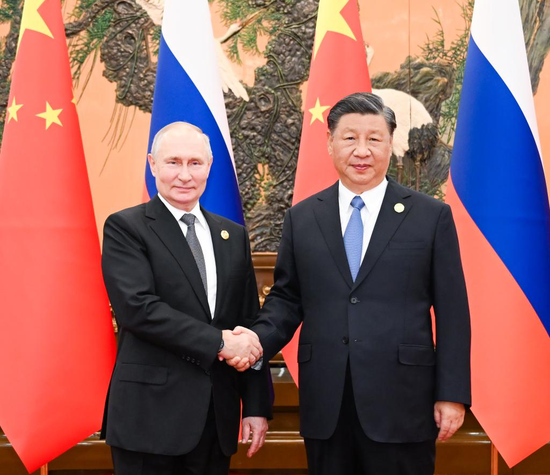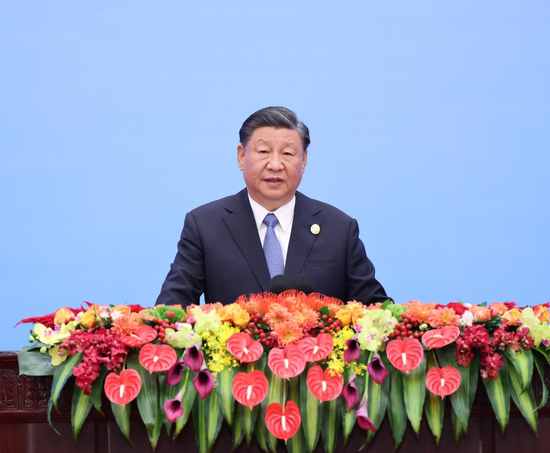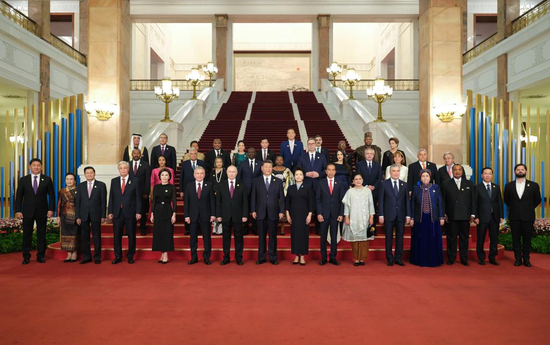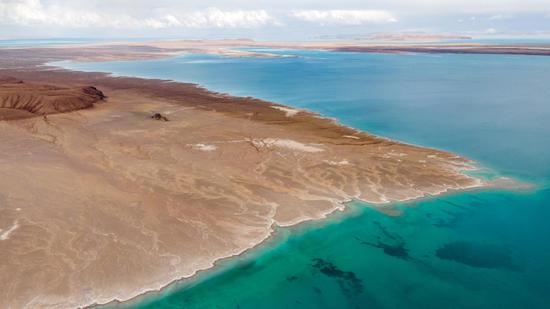
Wind turbine components are hoisted for assembly at a power plant in Ruichang, Jiangxi province, in August. (WEI DONGSHENG/FOR CHINA DAILY)
Despite subsidy cuts, renewable power helping nation meet dual carbon goals
Demand for wind power projects is expected to gradually pick up during the second half following the slow growth of China's wind power sector during the first six months, as policy gradually improves and other obstacles are resolved, said industry experts.
Overall performance of the wind power sector was relatively weak in the first half due to factors such as slow approval of offshore wind projects and sluggish bidding demand, said BOC International (China) Co Ltd.
However, it is expected that demand for both onshore and offshore wind installations will remain strong this year as a whole, considering last year's high bidding volumes and low installed capacity, it said.
The performance of several A-share-listed wind power industry leaders, including Xinjiang Goldwind Science &Technology Co Ltd and Mingyang Smart Energy Group, saw declines in net profit in the first half.
This is after newly installed offshore wind capacity plunged nearly 65 percent last year due to the government's decision to cease granting national-level subsidies for offshore wind power projects. The government offered various subsidies to wind farm developers between 2014 and 2021 for every kilowatt-hour of offshore wind power they delivered to the grid.
Phasing out subsidies has cut profit margins among wind power industry players. Under the subsidy change, offshore wind farms built from Jan 1 this year must sell the power they make to the grid at the same prices as coal plants.
Nevertheless, analysts still believe the sector will embrace massive development opportunities amid China's commitment to achieving a carbon peak before 2030 and carbon neutrality before 2060.
China's accumulated offshore wind capacity is projected to double by 2025, increasing from 30.5 gigawatts by the end of 2022 to more than 60 GW, said the National Energy Administration.
Luo Zuoxian, head of intelligence and research at the Sinopec Economics and Development Research Institute, said the wind power sector in China is expected to grow rapidly in the coming years, with a trend for wind turbines to become bigger, with taller hub heights and larger rotor diameters.
"The declining performance during the first six months is unlikely to impact the industry's rapid growth," Luo said.
He added that there is a trend of making wind turbines larger and more powerful, typically by increasing their physical size and capacity to generate more electricity from wind. Larger turbines are often more efficient and cost-effective, leading to improved performance in the wind energy industry.
Yao Yuan, marketing manager of the new energy industry at Schneider Electric, agreed, saying that using wind turbines with larger capacities is an inevitable path for offshore wind farms because they can save installation and maintenance costs.

Workers operate on an assembly line for wind turbines in Lianyungang, Jiangsu province, in July. [GENG YUHE/FOR CHINA DAILY]
"From 2012 to 2022, the average power capacity of an offshore wind turbine grew from less than 3 megawatts to more than 7 MW," he said.
According to Luo, although the half-year performance of Chinese wind turbine manufacturers has generally declined, there is a clear trend in offshore wind development and increased export demand against the backdrop of wind turbine upscaling.
Offshore wind will present companies with broad prospects for development amid the trend that wind turbines are built further offshore to maximize power output, as offshore turbine companies plan to make use of the more powerful and consistent wind resources for more efficient power generation, he said.
Considering the fact that offshore capacity is still small compared with onshore, representing just a sliver of the nation's total power mix, the sector has substantial room for further development, he added.
Luo also warned that moving further offshore also means deeper waters, which pose additional challenges, both for engineers and operators.
China overtook the UK to become the nation with the largest offshore wind power capacity in 2021, as many developers stepped up efforts to start projects.
According to the Chinese Wind Energy Association, China's cumulative installed capacity of offshore wind power exceeded 30 million kilowatts by the end of 2022, ranking first in the world for two consecutive years, accounting for about half of the world's total.
The cost of offshore wind power in China had also dropped by nearly 56 percent from 2010 to 2021, with the average kWh cost of offshore wind power projects dropping to about 0.33 yuan ($0.05) at present and is expected to achieve full parity by the end of the 14th Five-Year Plan (2021-25) period, it said.
China has capabilities of independent design, research and development, manufacturing, installation, commissioning and operation for large-capacity offshore wind turbines, said Qin Haiyan, secretary-general of the association.
As China sees its cumulative installed capacity of offshore wind turbines at only more than 30 million kW with utilization rates of less than 1.1 percent, the future development potential is huge, especially considering the fact that China's power load is concentrated in eastern coastal areas while current energy resources are mainly concentrated in the western and northern regions, Qin said.
Many domestic companies are already revving up their efforts. The world's first 16-MW offshore wind turbine off the coast of East China's Fujian province, operated by China Three Gorges Corp, was successfully connected to the grid and began generating electricity in July. With the largest single-unit generating capacity of all turbines in operation worldwide, it is able to generate more than 66 million kWh of clean electricity annually.
Lei Mingshan, chairman of China Three Gorges Corp, said the 16-MW offshore wind turbine is a breakthrough in the core technology of the offshore wind power industrial chain, and it will boost the sustainable development of the country's offshore wind power industry.
Mingyang Smart Energy Group, another major Chinese wind turbine manufacturer, plans to launch a wind turbine that floats on the surface of the ocean, instead of being anchored into the seabed, to tap into wind power in more remote parts of the ocean.
Zheshang Securities' analysts projected annual increased capacity for offshore wind in China to reach 10 GW in 2023 and 15 GW in 2024. The figure for 2025 is expected to grow further to 20 GW, as the cost of wind power is due to decrease, it said.


















































 京公网安备 11010202009201号
京公网安备 11010202009201号